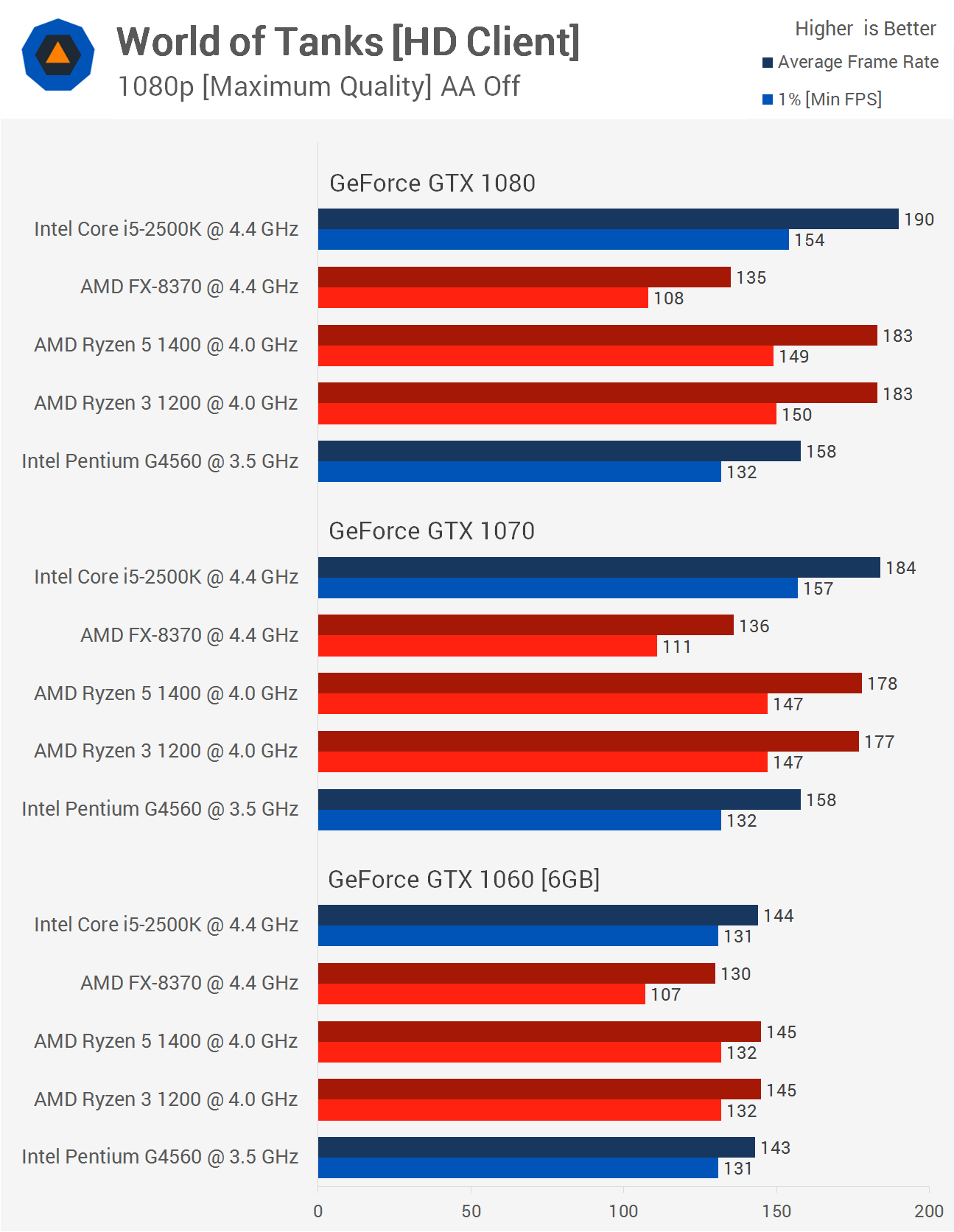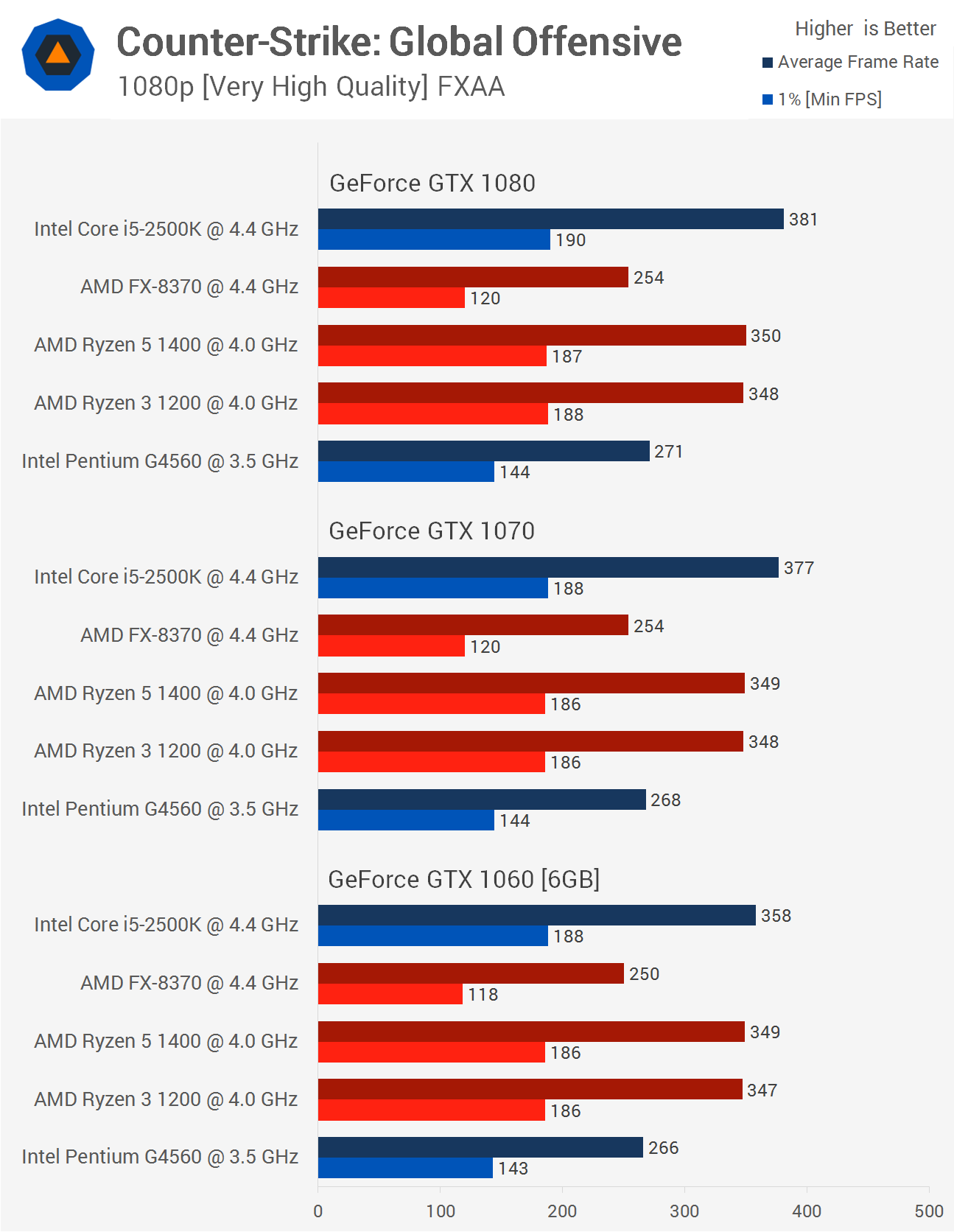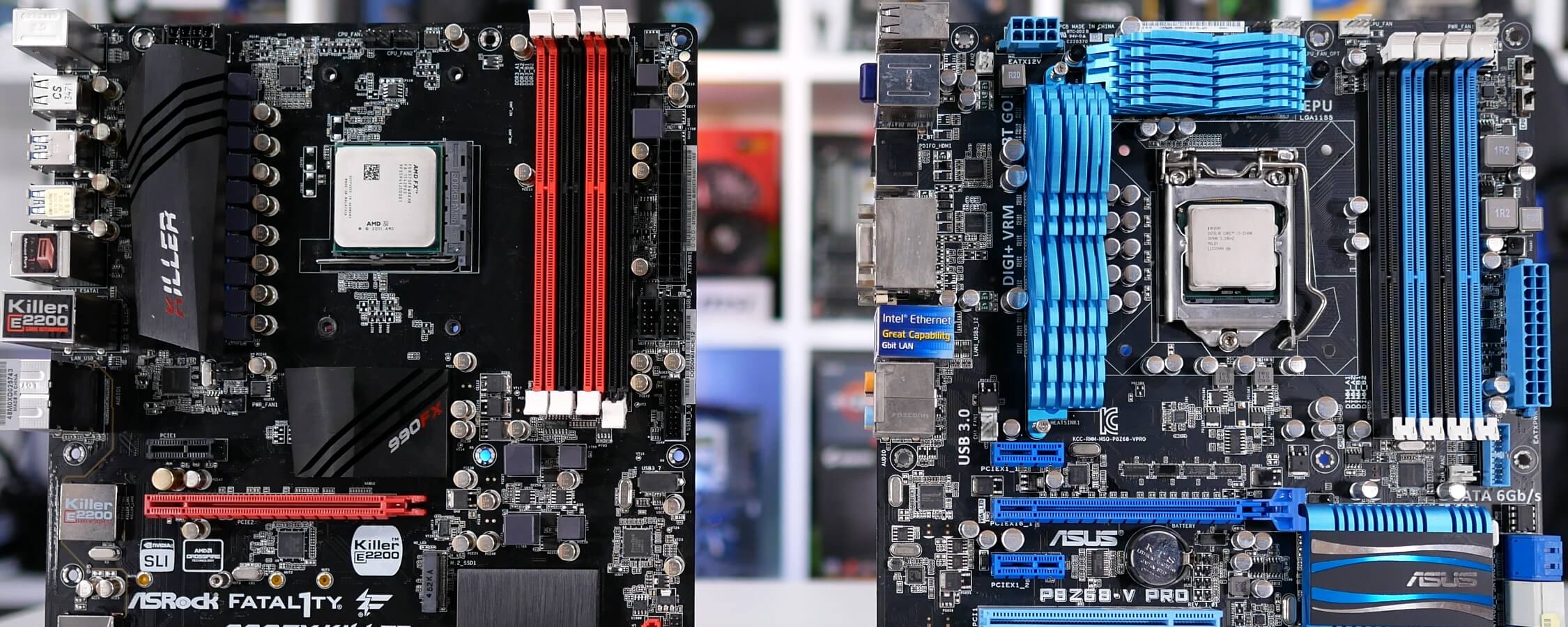Benchmarks: Rainbow Six Siege, World of Tanks, Counter Strike

Rainbow Six Siege shows competitive performance using the GeForce GTX 1060. The Ryzen 3 and Ryzen 5 CPUs deliver the best minimum frame rates, but performance is much the same across the board. Even with the GTX 1070, results remains quite similar across the five CPUs tested, though we did see more variance here and the Pentium G4560 and FX-8370 are starting to lag behind. Meanwhile, the 2500K matched the R5 1400's average frame rate but did dip slightly lower than the Ryzen 3 1200.
Moving to the GTX 1080, we saw further performance gains with all five processors though the G4560 was already giving us everything it had. You might have noticed that although the FX-8370 is now averaging 154fps we still saw frame dips down to 118fps and that made the FX CPU much slower than the 2500K and Ryzen CPUs.

World of Tanks isn't really that demanding on the CPU or GPU, though the FX-8370 makes it look like a real chore, even with the GTX 1060. I realize that we've seen some pretty poor performances so far but I was pretty surprised by how poorly the FX processor does here. Granted we are pushing over 100fps at all times, but when compared to the competition it surely putts along.
We see that the FX-8370 finds its limit with the GTX 1060 and it's much the same for the GTX 1070 and GTX 1080. The G4560 maxes out with the GTX 1070 and likewise really with the Ryzen and Core i5 CPUs.
World of Tanks favors single thread performance, or at least frequency, and this hands the Core i5-2500K a slight performance advantage in this title.

Wrapping up the benchmarks we have Counter Strike: Global Offensive and like World of Tanks strong single thread performance really counts for a lot here. As a result the Core i5-2500K looks really strong, it does only match the minimum frame rate of the Ryzen 3 and 5 CPUs, seems odd saying only, but that's because the average is at least 8% higher with the GTX 1070 and 1080.
